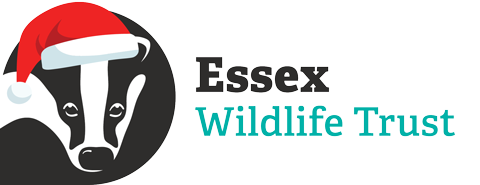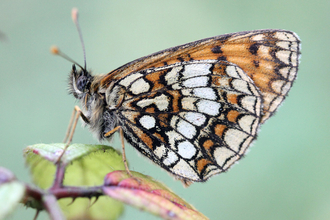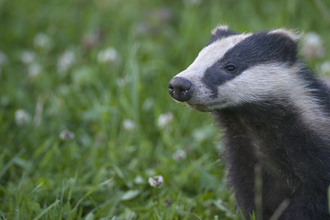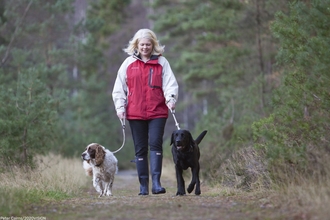Essex Wildlife Trust, following developed and established procedures, and careful selection and training of individual animals, will be using virtual fencing technology to conservation graze suitable nature reserves.
Virtual fencing uses GPS-enabled collars to set boundaries for livestock without the requirement for internal fences. This allows animals to graze larger areas, supporting natural browsing behaviour whilst protecting sensitive nature conservation areas.
The system allows for each animal to be tracked, supporting animal welfare and providing evidence-based conservation management. The technology will allow the Trust to increase the biodiversity of grazed nature reserves and help to restore and protect rare and endangered habitats and species.
Background Information
Virtual fencing has advantages for both livestock and for people, and it is on this basis that the Trust and many other conservation land managers around the UK deploy the technology. The use of GPS-based virtual fencing has been tried and tested and has now been used for many years in multiple locations.
Defra and the Animal & Plant Health Agency (APHA) asked the Animal Welfare Committee (AWC) to conduct a review of the technology and assess virtual fencing’s capabilities and the suitability of locations where it was being deployed.
The AWC provides authoritative advice to Government based on scientific evidence, stakeholder consultation, site visits, and the experience of its committee members. For virtual fencing the AWC conducted a detailed assessment between 2021 and 2022, providing its conclusions and recommendations in an independent report published by Defra in October 2022.
In its conclusions, the AWC recognised that virtual fencing has several advantages over conventional electric fencing. It also recognised that the current systems being used (such as NoFence) are of “high quality” and that, if used correctly and following the AWC’s recommendations, virtual fencing “has the potential to maintain or improve livestock welfare”.
Essex Wildlife Trust's approach
For the Trust, our fellow Wildlife Trusts and other nature conservation managers, the ability of the virtual fenced areas to encompass larger, more diverse pasture and browsing habitat provides for more natural grazing and for better nutrition.
The virtual fencing system the Trust has chosen is tried and tested over the last decade and has been further refined. Clear protocols including training both animals and staff are followed and there is good technical support and advice from the manufacturer, as well as monitoring of system deployments.
The Trust have a dedicated, specialist livestock and grazing team to ensure the welfare and maintenance of good condition of our conservation grazing animals. All animals are monitored at least daily as are any interactions between visitors and livestock. This is a legal requirement under the Welfare of Farmed Animals Regulations (WoFAR) (England & Wales 2007, Schedule 1 para 2). The Trust also ensures that it follows the Codes of Recommendations for the Welfare of Livestock for cattle (2003) and sheep (2000). Furthermore, we adhere to the Five Freedoms protocol for managing and caring for livestock. The Trust’s Grazing Team has been trained in herding and handling techniques, that minimise stress to our animals, by a Defra-recognised expert and advisor.
Animals are carefully selected for the technology based on age and temperament. Training is conducted in a quiet and carefully chosen location with visual cues used to reinforce the association between audible cues, electric pulses and the physical barrier. The training period is usually very short as most animals learn quickly, often within the first day. The AWC found in its investigation that training might last between 5 -7 days. If during training any animal was shown to be unsuitable for virtual fencing, the Trust would not use that animal with the system and it would only graze sites where standard livestock fencing is used.
Additional information
The electric pulse that provides the shock is set at a fixed and much lower level than that of most commonly used electric fencing systems. In tests on cows when similar systems were being developed in the USA, the measurements of the cows’ responses showed that the stimulus provoked a similar response in the cows to that which they might experience if startled by something natural like a low-flying flock of birds passing overhead.
Once cows have learnt, at sites where the system has been in use for many years, they use the audible cues intelligently and graze right along the buffer zones of any virtual boundary that they may regularly encounter using the audible cues to guide them. The grazed zone line is usually strikingly clear, and the cows are unphased and content to graze along it using the cues.
The audible cues also begin many metres (up to 17m) from the virtual fence-line so, once trained, the cows are much less likely to receive a pulse during normal grazing activity. The number of pulses a cow receives during a grazing period is closely monitored and action would be taken by the Trust’s Grazing Team to remove any animal from the virtual fence system if it showed signs of ignoring the audible cues for whatever reason. The animal would then graze sites where standard livestock fencing is used.



